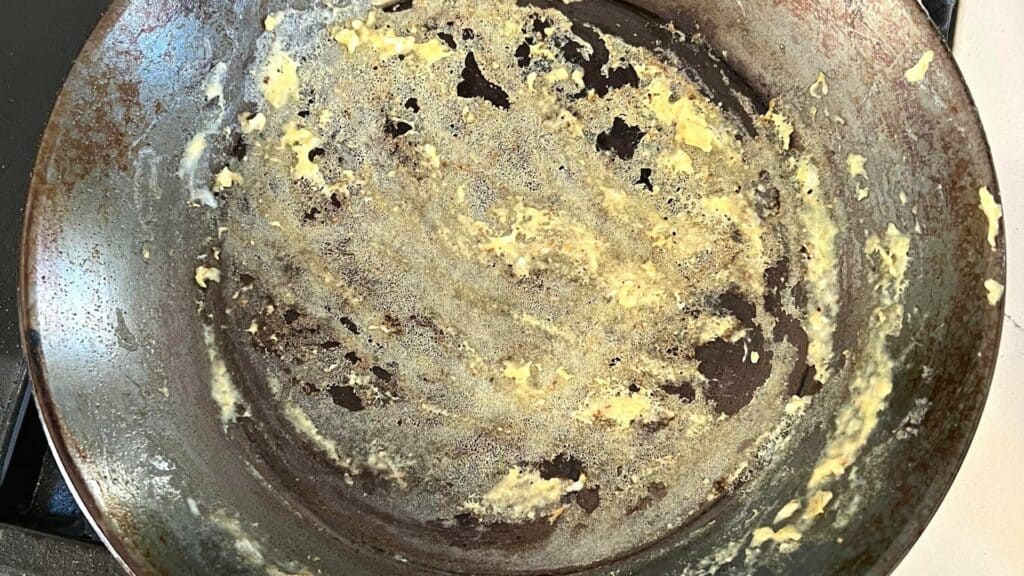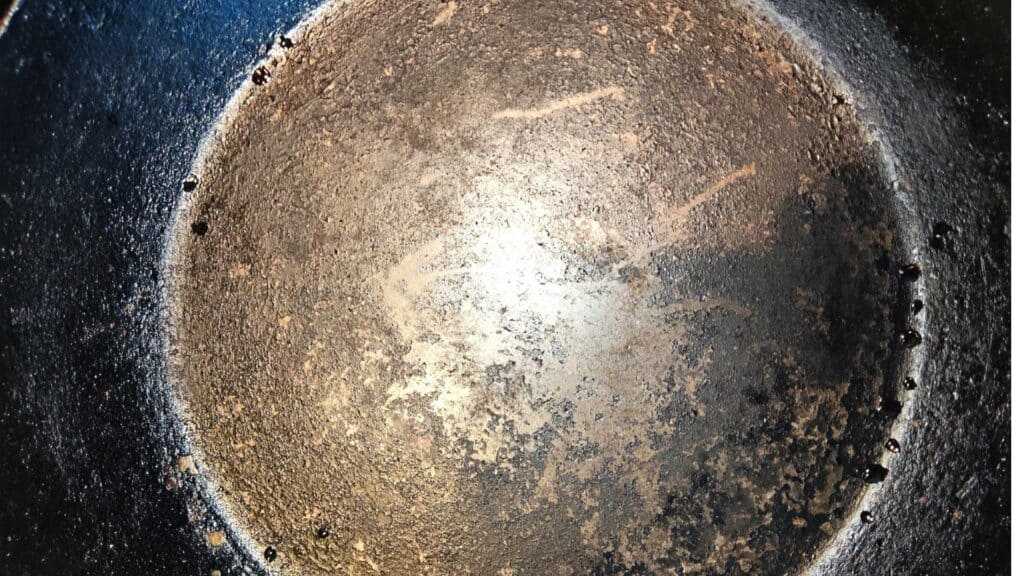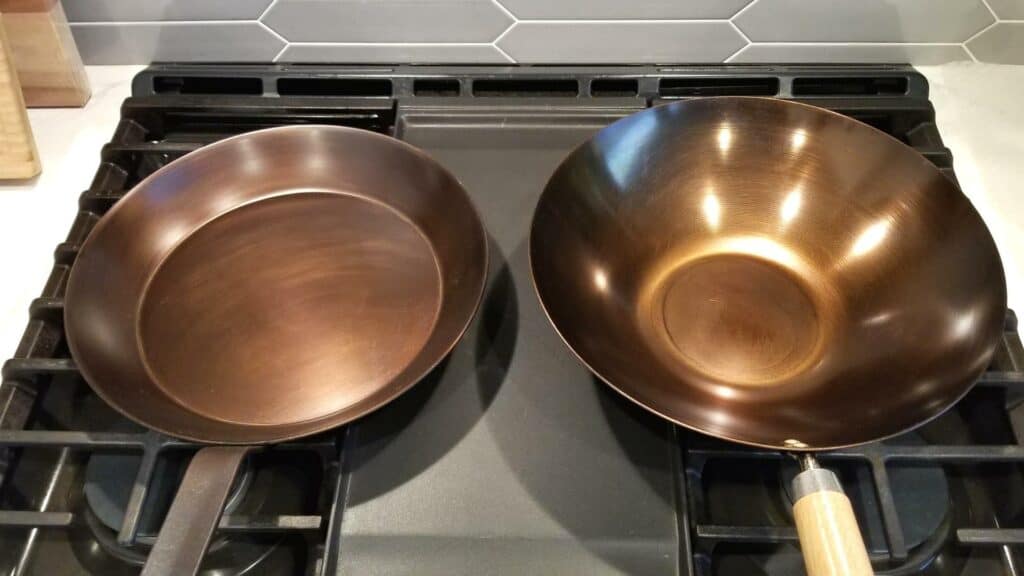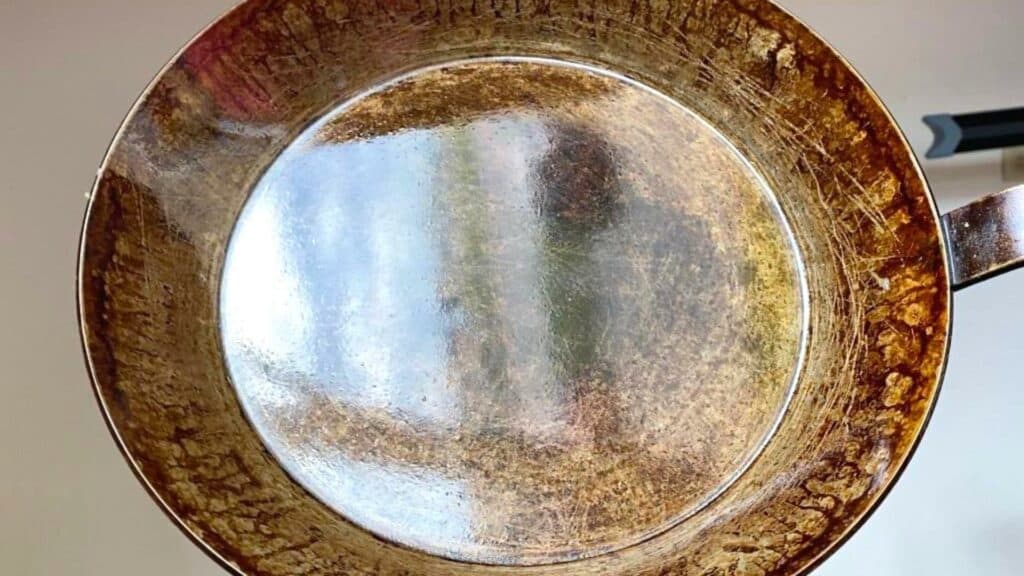Wether you’re here because you need to simply maintain your carbon steel pan surface, or you just stripped your carbon steel pan to bare metal and need to retry your hand at seasoning. You’re in the right place.
I’ve never had a problem with my seasoning apart from a little carbon build up (don’t worry, will talk about that too). And that’s because I’ve researched for a long while through many videos, comments, and forum threads how to properly season my carbon steel pan even before I bought one.
I like tinkering with new toys in the kitchen and find out the proper technique and how to use these tools. Hopefully, my little hobby will benefit you by helping you with your own pan and seasoning.
Today I’m going to walk you through when you should reseason your carbon steel pan and exactly how I do it after watching and reading about seasoning for endless hours. Let’s get started, shall we?
When Is The Right Time To Reseason Your Carbon Steel Pan?

If you’re just looking how to season your pan after stripping it to bare metal, then you can skip this part.
If you need to do a maintenance seasoning, and you’re not exactly sure how to, then this section is just for you, my friend.
I usually look at my carbon steel pan surface in 3 different stages:
- Right before I’m about to cook.
- While I’m cooking with it.
- After I finished cooking, and I just cleaned my pan.
This helps me to notice if there’s anything that I need to do to my cooking surface or not.
I check my pan before I start cooking to make sure there’s no rust spot on it, it doesn’t take much, just a quick glance, and you’re ready to cook.
Then I check how the surface behaves while I’m cooking. For example, when I cook an egg dish, I always know how high the fire is, how long I preheat the pan and how much butter to use. So if the pan behaves differently from what I’m used to, and it’s sticking a bit too much, then you know for sure that it needs a maintenance seasoning.
After I finish cooking, and I’m starting to clean the pan with hot water, I let the water run for a little, so the pan is not screaming hot. After is cool enough to handle with my hands, I start checking with my fingers if there’s any weird residue or if it feels rough. The surface of your pan should be completely smooth.
So, what happens if something is wrong in any of these stages? How do you deal with it? I’m glad you asked.
When You See Rust

If even before cooking you check your pan, and you see a rust spot, first of all, don’t panic. Go to the sink with warm water and start using the rough green side of a sponge and buff out the rust. That is usually enough to make that spot disappear.
If you have a lot of rust, you should get a chainmail scrubber (from Amazon) or use steel wool and start scrubbing fairly hard until all the rust is gone.
When Food Is Sticking Too Much

If this is the case, then you should immediately notice the difference when you cook with it. Stuff sticks when it’s not supposed to. If you’re using proper technique, and you’ve preheated your pan, and you have sticking even after that, then you know you need to reseason it.
This problem is much easier to see in action when making dishes with eggs. Stuff like scrambled eggs, omelettes, frittatas, or one of my favorite tortilla de patatas.
Carbon Residue Build Up

This is probably the biggest issue for a lot of people.
Let me know if this sounds familiar to you. You’ve been using your carbon steel pan for a few months. It’s wonderful, nothing sticks to it, and it’s a joy to use, but after a while you notice that more and more things get stuck to the pan and there’s a rough texture on the pan.
If that’s you, then you have a carbon residue build up issue. What does it mean? It means that little particles of food stick to the pan and overtime they burn.
The more this happens, the more residue you accumulate, resulting in your surface becoming rough and oftentimes sticky too, when it should be nice and smooth.
What you need to do is get yourself a stainless steel chainmail scrubber (this is the one I got from Amazon), you could use a steel wool ball, but you might run the risk of removing the seasoning too.
I prefer the chainmail because it really excels at removing all those little bits of food that are stuck to the pan.
I like it so much that I always clean my pan after cooking with it every single time. That way, I know that there’s no carbon residue at all in my pan. Which cuts down the number of times I need to maintain my pan in the long run. It’s worth it, trust me.
How To Reseason Your Carbon Steel Pan Properly

So, after all that, if you’ve removed a rust spot, or you’ve removed a lot of carbon residue, you need to put a new protective layer of oil to protect it from rusting and create a nice smooth cooking surface.
If you’ve used the chainmail scrubber like I recommended, then right now you should have a really smooth, rust-free surface. That’s great!
All you have to do to reseason your pan is simple:
- After you finished cleaning it, put it on the fire so all the water evaporates and there’s no moisture left on the pan. If there’s moisture trapped under your seasoning, you might have to deal with rust again in the future.
- Once the pan is completely dry, apply a tiny amount of oil to your pan (here are the oils we recommend you use). I’d say it’s about 1/4 of a teaspoon.
- With a paper towel, wipe the oil in circular motions all around the pan to make sure you have an even coating. You might see smoke while you’re wiping, that’s normal, don’t be afraid.
- Let the pan smoke for a minute or two and then turn off the fire.
- Let it cool.
If you follow these steps properly, then after it cools down, try to touch the surface of your pan. You will notice you have a really smooth surface, which is what you want to see on a carbon steel pan.
Conclusion
As you can see, reseasoning your pan takes a bit of care and patience. But after you’ve done these steps a couple of times, it’s going to become almost second nature, and you’ll breeze through the process with ease.
